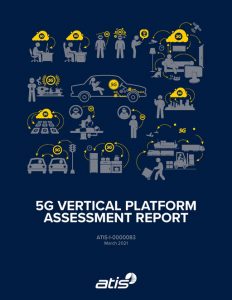 5G — offering more capacity, faster speeds, lower latency, increased reliability and availability — is rapidly being deployed by operators around the world. Since 5G can help create new business models for vertical services: consumer-to-consumer, or business-to-business; many industries want to better understand how to leverage and integrate 5G capabilities into their value chain. This makes it critical to understand and identify particular vertical industries’ needs and look for opportunities where the 5G service provider could address them and add further value. A key element is an enablement platform.
5G — offering more capacity, faster speeds, lower latency, increased reliability and availability — is rapidly being deployed by operators around the world. Since 5G can help create new business models for vertical services: consumer-to-consumer, or business-to-business; many industries want to better understand how to leverage and integrate 5G capabilities into their value chain. This makes it critical to understand and identify particular vertical industries’ needs and look for opportunities where the 5G service provider could address them and add further value. A key element is an enablement platform.
An enablement platform is a standardized framework that provides functional capabilities to enable these verticals application needs. In the scope of 5G, this refers to a set of capabilities that are required or desired by enterprises in support of the services they provide that may extend beyond those features of 5G as defined by 3GPP.
Some examples of enablement platform services that support the unique needs of different vertical markets include the following: non-public network configuration and quality management; connection and policy management; location and spatial awareness service; identity management; data management and security management.
Recently, the released the 5G Vertical Platform Assessment Report that identifies a set of specific platform capabilities required by enterprises that are not currently within the scope of 3GPP.
To optimize the report’s focus, ATIS surveyed its members to identify and prioritize which vertical markets were most likely to leverage 5G networks and services. The survey identified seven vertical industries that were of priority interest for its members which include industrial and manufacturing, connected vehicles, smart cities, public safety, health care, media/entertainment, and remote learning / education.
Through outreach conducted across these seven vertical industries, ATIS was able to identify the 5G-specific use cases within each vertical that are underpinned by the specific characteristics of 5G New Radio (NR) infrastructure: Enhanced Mobile Broadband (eMBB), Ultra-Reliable Low Latency Communications (URLLC) and Massive Machine-Type Communications (mMTC) and create a landscape of the 5G-enabled vertical requirements.
The report then identifies several common, cross-industry enablement platform needs across each of the different verticals. These include connection and policy management; network quality and service level agreement (SLA) management; data sharing; data trust; personally identifiable information (PII) and consent for data use; content digital rights management (DRM); location and spatial awareness; and exchange of value.
The goal is to enable a common set of 5G vertical enablement platform services that can be used consistently across any vertical industry to develop innovative new services and applications to help enterprise digital transformation and unlock new, 5G-enabled business opportunities.
The work of the 5G Vertical Enablement Platform (5GVP) Focus Group builds on the vision of ATIS’ Next G Alliance to further advance 5G standards while setting the path towards the evolution of the mobile network in the progress toward 6G.
Vertical industries will be transformed by the higher-speed, lower-latency, QoS-enabled capabilities that 5G networks bring. However, to enable verticals to fully exploit 5G innovation, it is essential to identify common platform needs that will unlock new opportunities for communications service providers.
The 5G Vertical Enablement Platform Report offers the blueprint towards expanding the value of 5G.

